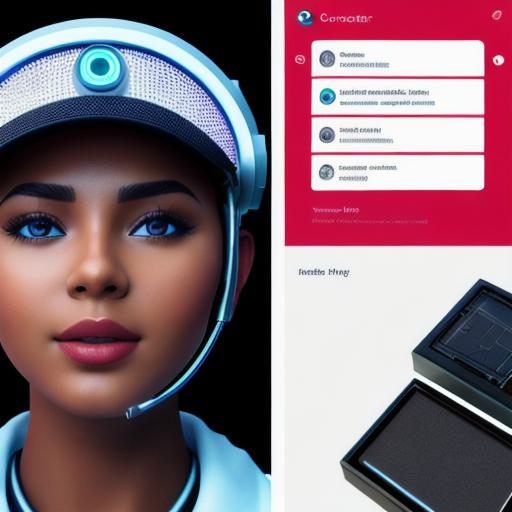
In today’s world, video games have become a popular form of entertainment that captivates people of all ages. The immersive and interactive nature of video games has made them an increasingly popular choice for relaxation and leisure. However, creating immersive gaming experiences is not a simple task, as it requires the use of various tools and techniques. In this comprehensive guide, we will delve into the world of video game design and explore the tools that designers use to create engaging and memorable gaming experiences.
Understanding Immersive Gaming Experiences
Before we discuss the tools used in creating immersive gaming experiences, it is essential to understand what constitutes an immersive experience. An immersive experience is one that engages the player’s senses and emotions, making them feel as though they are part of the game world. This type of experience is achieved by creating a believable and interactive environment that responds to the player’s actions in real-time.
Immersive gaming experiences are not limited to specific types of games, but can be found in all genres, including adventure, action, strategy, role-playing, sports, and educational games. The key to creating an immersive experience lies in the ability to engage the player’s senses and emotions, which is achieved through various techniques such as storytelling, world-building, character development, sound design, and game mechanics.
Tools Used by Video Game Designers
Now that we have a better understanding of what constitutes an immersive gaming experience, let’s explore the tools used by video game designers to create such experiences.
- Unity 3D
Unity 3D is one of the most popular game engines used by game developers worldwide. It is a cross-platform development engine that allows developers to create games for various devices, including mobile phones, PCs, consoles, and virtual reality (VR) systems. With Unity 3D, designers can create interactive environments, characters, and objects using various assets such as models, textures, animations, and scripts.
Unity 3D also offers a vast array of plugins and add-ons that can enhance the gaming experience by adding features such as physics simulation, AI, network programming, and advanced graphics rendering. One example of a popular Unity plugin is the URP (Unreal Engine Rendering Pipeline), which is a customizable rendering pipeline that allows developers to create stunning visual effects in their games.
- Unreal Engine
Unreal Engine is another popular game engine used by video game designers. It was created by Epic Games and has been used in the development of many successful games, including Fortnite, Paragon, and Gears 5. Like Unity 3D, Unreal Engine offers a vast array of tools and features that enable developers to create immersive gaming experiences.
One of the key features of Unreal Engine is its support for real-time rendering, which allows designers to preview changes to their game in real-time. This feature is particularly useful when working with complex scenes and characters, as it enables designers to see how their creations will look and behave in the final product.
Unreal Engine also supports advanced graphics rendering, including support for HDR (High Dynamic Range) lighting, which enhances the visual quality of games by providing a wider range of colors and tones. Additionally, Unreal Engine offers a variety of plugins and add-ons that can be used to enhance the gaming experience, such as Blueprint Visual Scripting, which allows developers to create complex game logic without writing code.
- GameMaker Studio
GameMaker Studio is a popular game development platform that uses a visual programming language called GML. It was created by YoYo Games and has been used in the development of many successful games, including Hotline Miami, Dust: An Eternal Legacy, and Monster Dash. GameMaker Studio offers a simple and intuitive interface that allows developers to create games quickly and efficiently.
One of the key features of GameMaker Studio is its support for 2D and 3D game development, which allows developers to create games for various devices, including mobile phones, PCs, consoles, and web browsers. Additionally, GameMaker Studio offers a vast array of tools and features that enable developers to create immersive gaming experiences, such as support for physics simulation, AI, advanced graphics rendering, and customizable user interfaces.
- Blender 3D
Blender 3D is an open-source 3D modeling and animation software used by video game designers and artists worldwide. It offers a wide range of tools and features that enable users to create 3D models, textures, animations, and visual effects. Blender 3D has been used in the development of many successful games, including The Legend of Zelda: Breath of the Wild, Fortnite, and Godot.
One of the key features of Blender 3D is its modular architecture, which allows users to add and remove features as needed. This feature enables designers to create a custom workflow that suits their needs and preferences. Additionally, Blender 3D offers advanced tools for rigging, animation, and visual effects, which allow designers to create complex scenes and characters with ease.
- Photoshop
Photoshop is an image editing software used by video game designers and artists worldwide to create textures, art assets, and other visual elements. It offers a vast array of tools and features that enable users to manipulate images, including layers, filters, masks, and brushes. Photoshop has been used in the development of many successful games, including Uncharted 4, The Witcher 3: Wild Hunt, and Red Dead Redemption 2.
One of the key features of Photoshop is its support for various file formats, which allows designers to work with a wide range of assets. Additionally, Photoshop offers advanced tools for color correction, retouching, and image manipulation, which allow designers to create visually stunning art assets and textures.
Case Studies: Creating Immersive Gaming Experiences
Now that we have discussed the tools used by video game designers let’s look at some real-life examples of how these tools are used to create immersive gaming experiences.
- Unity 3D and Fortnite
Fortnite is a popular online multiplayer battle royale game that has taken the world by storm. It was developed using Unity 3D, which allowed Epic Games to create a seamless and immersive gaming experience for players. Fortnite’s maps are vast and dynamic, with various environments such as forests, deserts, and cities. Additionally, Fortnite features advanced graphics rendering, including support for HDR lighting, which enhances the visual quality of the game.

Fortnite’s immersive experience is further enhanced by its use of procedural generation, which allows the game to generate new maps and content on the fly. This feature ensures that players always have something new to explore and keeps them engaged for hours.
- Unreal Engine and The Witcher 3: Wild Hunt
The Witcher 3: Wild Hunt is a popular open-world RPG game developed using Unreal Engine. It was created by CD Projekt Red and features an immersive gaming experience that transport players to the world of The Witcher. The game’s maps are vast and detailed, with various environments such as forests, swamps, and cities.
The Witcher 3: Wild Hunt also features advanced graphics rendering, including support for HDR lighting, which enhances the visual quality of the game. Additionally, the game uses a technique called ray tracing, which allows for more realistic reflections and shadows. This feature further enhances the immersive experience by creating a more believable environment.
- GameMaker Studio and Hotline Miami
Hotline Miami is a popular top-down shooter game developed using GameMaker Studio. It was created by Darius Bramschtein and features an immersive gaming experience that combines fast-paced action with strategic gameplay. The game’s levels are designed to be challenging and require players to think on their feet and make split-second decisions.
Hotline Miami also features advanced graphics rendering, including support for 3D graphics, which enhances the visual quality of the game. Additionally, the game uses a technique called pixel art, which creates a unique visual aesthetic that adds to the immersive experience.
Summary: Creating Immersive Gaming Experiences
In conclusion, creating immersive gaming experiences requires a combination of advanced tools and techniques. Video game designers use a wide range of software and platforms, including Unity 3D, Unreal Engine, GameMaker Studio, Blender 3D, and Photoshop, to create 3D models, textures, animations, and visual effects. These tools enable designers to create dynamic and engaging game environments that transport players to new worlds and provide hours of entertainment.
By understanding the tools and techniques used by video game designers, aspiring game developers can create their own immersive gaming experiences and contribute to the rapidly growing world of video games.



